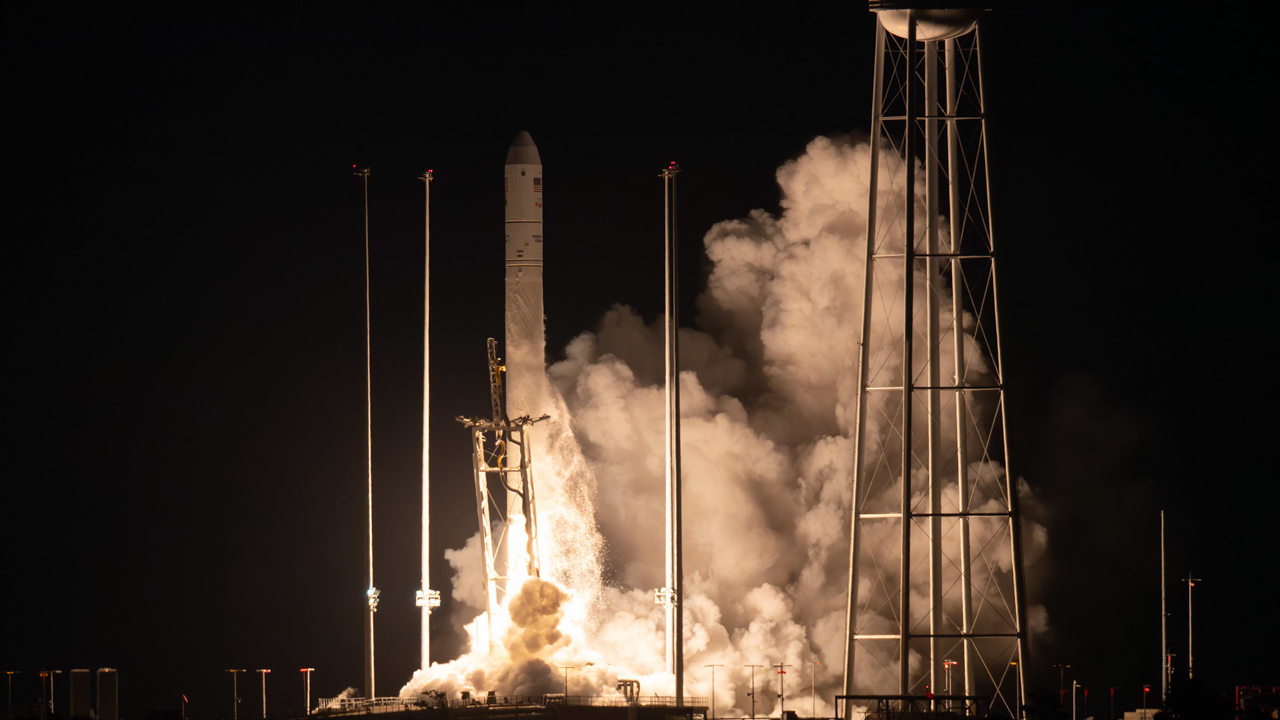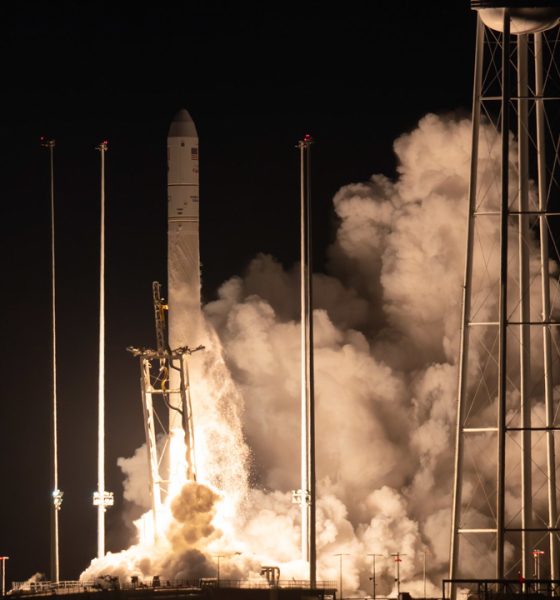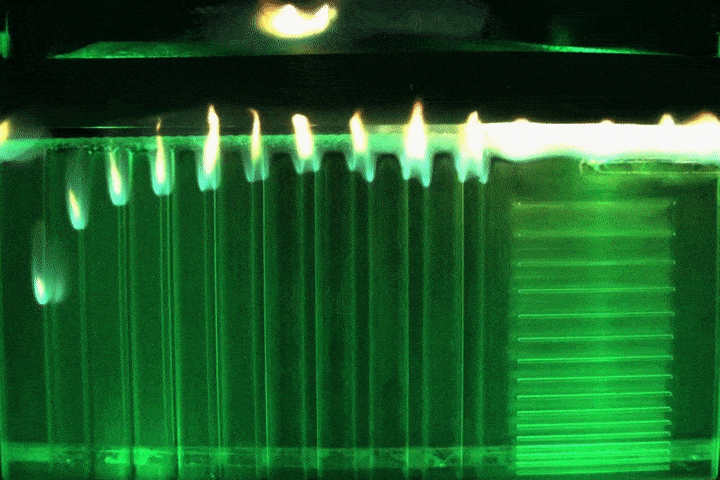

News
Final Antares flight successfully launches Space Station resupply mission
Antares’ final mission was a 100 percent success as the rocket sent the Cygnus cargo spacecraft to the International Space Station.
The launch occurred on time at 8:31 p.m. ET (00:31 UTC) from Launch Pad 0 at the Mid-Atlantic Regional Spaceport on Wallops Island in Virginia. Cygnus will arrive at the International Space Station on August 4th and a planned berthing to the station at 5:55 a.m. ET (09:55 UTC).
Liftoff! @NorthropGrumman’s Antares rocket lights up the night sky over @NASA_Wallops. The #CRS19 S.S. Laurel Clark, named after the late astronaut, will deliver science, supplies, and snacks to the @Space_Station. pic.twitter.com/8XK9ZnsIVV
— NASA (@NASA) August 2, 2023
Since the first Cygnus mission, all have been named, and for this mission, it has been named the S.S. Laurel Clark in honor of the NASA astronaut who flew on the STS-107 Space Shuttle Columbia mission.
Following orbital insertion, the Cygnus spacecraft had no issues as it unfurled its two solar arrays that will provide power to the spacecraft on its journey to the Space Station. During the NG-18 mission, one of the solar arrays failed to deploy due to debris being lodged into the separation mechanics during stage separation.
Similar to how older SpaceX Dragon cargo capsules were berthed to the ISS, NASA astronaut Woody Hoburg will use the Canadarm2 to grapple Cygnus and attach it to the Space Station. Once Cygnus is attached, the crew aboard the ISS will begin removing the supplies and experiments from the vehicle.
In addition to the supplies, some of the experiments on board include:
Better water for explorers: This system, Exploration PWD, features advances in water sterilization, and microbial growth reduction, and has the ability to dispense hot water.
Testing gene therapy: Neuronix: will demonstrate the formation of three-dimensional neuronal cell cultures in microgravity and tests a neuron-specific gene therapy. If successful, it could provide the opportunity to test drugs and treatments for neurological disease on the ISS.
Astrobee: A free-flying robot that uses electric fans to navigate, will help astronauts with routine daily activities. The Astrobee system consists of 3 robots named Bumble, Honey, and Queen. The system has been in use off and on since 2018.
Cygnus will depart the ISS in October, carrying with it thousands of pounds of trash and one final experiment that will occur before its fiery re-entry into Earth’s atmosphere.
The Spacecraft Fire Experiment-VI, the final in the series, will test flammability at different oxygen levels and demonstrate fire detection, combustion product monitoring, and post-fire cleanup capabilities.
The Saffire experiment in progress during a prior Cygnus mission (Credit NASA)
The next 3 Cygnus spacecraft will launch aboard a SpaceX Falcon 9 while Northrop Grumman and Firefly Aerospace work on developing the Antares 330 rocket that is due to launch no earlier than 2025.
Questions or comments? Shoot me an email at rangle@teslarati.com, or Tweet me @RDAnglePhoto.

News
Tesla Supercharger network delivers record 6.7 TWh in 2025
The network now exceeds 75,000 stalls globally, and it supports even non-Tesla vehicles across several key markets.

Tesla’s Supercharger Network had its biggest year ever in 2025, delivering a record 6.7 TWh of electricity to vehicles worldwide.
To celebrate its busy year, the official @TeslaCharging account shared an infographic showing the Supercharger Network’s growth from near-zero in 2012 to this year’s impressive milestone.
Record 6.7 TWh delivered in 2025
The bar chart shows steady Supercharger energy delivery increases since 2012. Based on the graphic, the Supercharger Network started small in the mid-2010s and accelerated sharply after 2019, when the Model 3 was going mainstream.
Each year from 2020 onward showed significantly more energy delivery, with 2025’s four quarters combining for the highest total yet at 6.7 TWh.
This energy powered millions of charging sessions across Tesla’s growing fleet of vehicles worldwide. The network now exceeds 75,000 stalls globally, and it supports even non-Tesla vehicles across several key markets. This makes the Supercharger Network loved not just by Tesla owners but EV drivers as a whole.
Resilience after Supercharger team changes
2025’s record energy delivery comes despite earlier 2024 layoffs on the Supercharger team, which sparked concerns about the system’s expansion pace. Max de Zegher, Tesla Director of Charging North America, also highlighted that “Outside China, Superchargers delivered more energy than all other fast chargers combined.”
Longtime Tesla owner and FSD tester Whole Mars Catalog noted the achievement as proof of continued momentum post-layoffs. At the time of the Supercharger team’s layoffs in 2024, numerous critics were claiming that Elon Musk was halting the network’s expansion altogether, and that the team only remained because the adults in the room convinced the juvenile CEO to relent.
Such a scenario, at least based on the graphic posted by the Tesla Charging team on X, seems highly implausible.
News
Tesla targets production increase at Giga Berlin in 2026
Plant manager André Thierig confirmed the facility’s stable outlook to the DPA, noting that Giga Berlin implemented no layoffs or shutdowns amid challenging market conditions.

Tesla is looking positively toward 2026 with plans for further growth at its Grünheide factory in Germany, following steady quarterly increases throughout 2025.
Plant manager André Thierig confirmed the facility’s stable outlook to the Deutsche Presse-Agentur (DPA), noting that Giga Berlin implemented no layoffs or shutdowns despite challenging market conditions.
Giga Berlin’s steady progress
Thierig stated that Giga Berlin’s production actually rose in every quarter of 2025 as planned, stating: “This gives us a positive outlook for the new year, and we expect further growth.” The factory currently supplies over 30 markets, with Canada recently being added due to cost advantages.
Giga Berlin’s expansion is still underway, with the first partial approval for capacity growth being secured. Preparations for a second partial approval are underway, though the implementation of more production capacity would still depend on decisions from Tesla’s US leadership.
Over the year, updates to Giga Berlin’s infrastructure were also initiated. These include the relocation of the Fangschleuse train station and the construction of a new road. Tesla is also planning to start battery cell production in Germany starting 2027, targeting up to 8 GWh annually.
Resilience amid market challenges
Despite a 48% drop in German registrations, Tesla maintained Giga Berlin’s stability. Thierig highlighted this, stating that “We were able to secure jobs here and were never affected by production shutdowns or job cuts like other industrial sites in Germany.”
Thierig also spoke positively towards the German government’s plans to support households, especially those with low and middle incomes, in the purchase and leasing of electric vehicles this 2026. “In our opinion, it is important that the announcement is implemented very quickly so that consumers really know exactly what is coming and when,” the Giga Berlin manager noted.
Giga Berlin currently employs around 11,000 workers, and it produces about 5,000 Model Y vehicles per week, as noted in an Ecomento report. The facility produces the Model Y Premium variants, the Model Y Standard, and the Model Y Performance.
News
Tesla revamped Semi spotted, insane 1.2 MW charging video releases
These developments highlight Tesla’s ongoing refinements to the vehicle’s design and infrastructure.

Tesla is gearing up for high-volume Semi production in 2026, with the Class 8 all-electric truck’s revamped variant being spotted in the wild recently. Official footage from Tesla also showed the Semi achieving an impressive 1.2 MW charging rate on a charger.
These developments highlight Tesla’s ongoing refinements to the vehicle’s design and infrastructure.
Revamped Tesla Semi sighting
Tesla Semi advocate @HinrichsZane, who has been chronicling the progress of the vehicle’s Nevada factory, recently captured exclusive drone footage of the refreshed Class 8 truck at a Megacharger stall near Giga Nevada. The white unit features a full-width front light bar similar to the Model Y and the Cybercab, shorter side windows, a cleared fairing area likely for an additional camera, and diamond plate traction strips on the steps.
Overall, the revamped Semi looks ready for production and release. The sighting marks one of the first real-life views of the Class 8 all-electric truck’s updated design, with most improvements, such as potential 4680 cells and enhanced internals, being hidden from view.
1.2 MW charging speed and a new connector
The official Tesla Semi account on X also shared an official video of Tesla engineers hitting 1.2 MW sustained charging on a Megacharger, demonstrating the vehicle’s capability for extremely rapid charging. Tesla Semi program lead Dan Priestley confirmed in a later post on X that the test occurred at a dedicated site, noting that chargers at the Semi factory in Nevada are also 1.2 MW capable.
The short video featured a revamped design for the Semi’s charging port, which seems more sleek and akin to the NACS port found in Tesla’s other vehicles. It also showed the Tesla engineers cheering as the vehicle achieved 1.2 MW during its charging session. Dan Priestley explained the Semi’s updated charging plug in a post on X.
“The connector on the prior Semi was an early version (v2.4) of MCS. Not ‘proprietary’ as anyone could have used it. We couldn’t wait for final design to have >1MW capability, so we ran with what had been developed thus far. New Semi has latest MCS that is set to be standard,” the executive wrote in a post on X.
Check out the Tesla Semi’s sighting at the Nevada factory in the video below.








